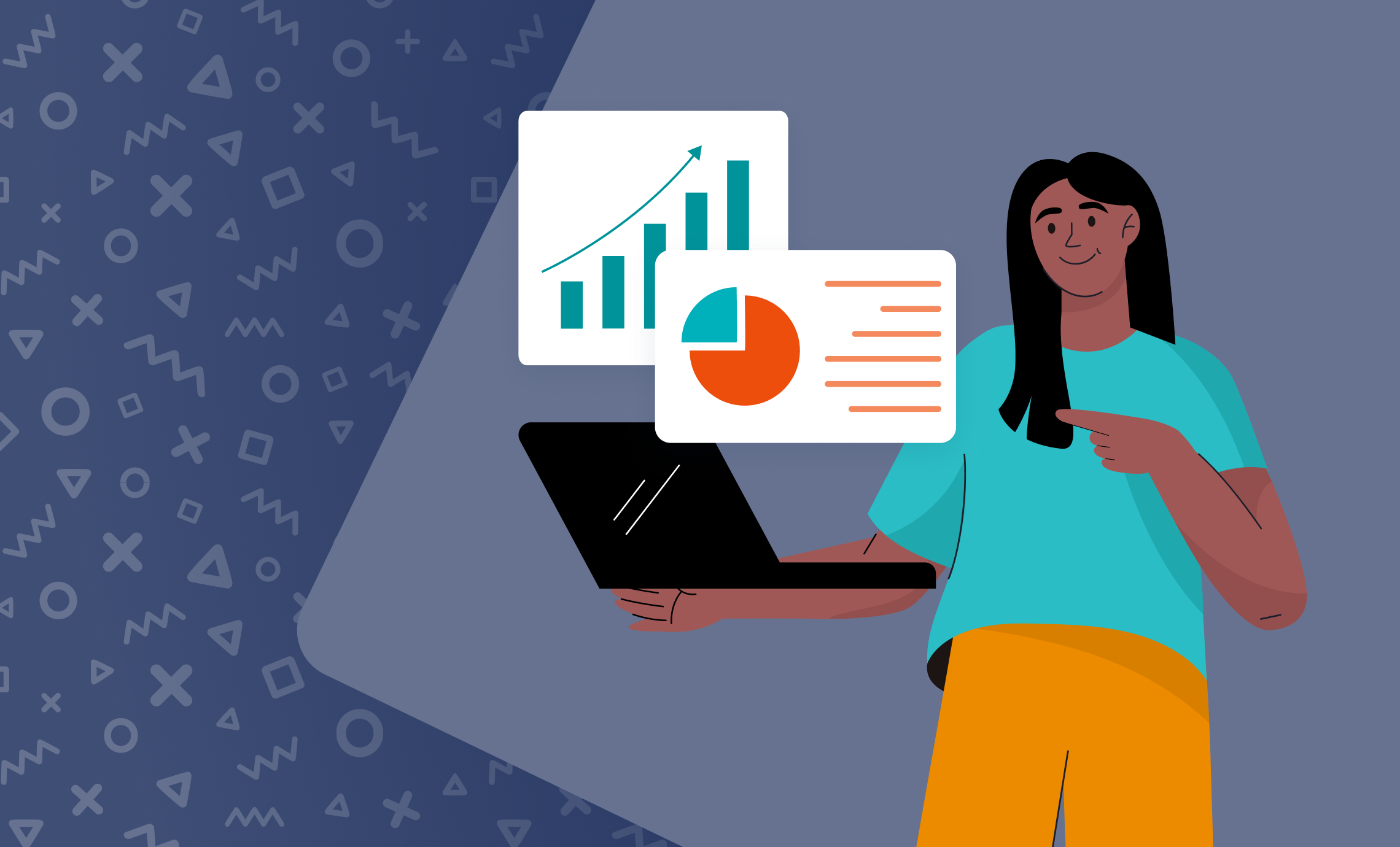Not every organization that uses business analytics must be a for-profit company. Professional societies, trade associations, and nonprofit groups can all use analytics tools to improve their staff operations, reach more members and non-members, and make meaningful progress toward their mission and goals.
Business analytics is essential for any modern organization. The data-driven business world requires companies to effectively communicate their data to make informed decisions. Professional associations and trade groups can also use this tactic to further the pursuit of their organizations’ missions.
Raw data is difficult to interpret and even harder to communicate. However, business analytics simplifies that information, making it easier to understand through visualization and identification of trends and correlations. Using business analytics makes running your association easier by providing your decision-makers with the valuable data they need. The analysis gives insight into your operations, helping you determine if your organization is on the right track or moving in the wrong direction.
You can use the different types of business analytics to examine your association’s data from various angles, from spotting sudden changes to predicting future trends. Here’s how to get started.
How can professional associations benefit from business analytics?
1. Make data-based decisions
Good decisions rarely happen in a vacuum—association leaders drive lasting organizational change. For leaders to make the best decisions about what the association should do to further its mission, they need as much relevant data as possible and in an easy-to-understand format.
Making decisions should happen with as much information as possible. Business analytics provides the necessary historical background to see how previous decisions affected operations and the direction of movement toward your association’s goals. By looking at the outcomes of previous work, those on the board of directors or committees can propose actions that continue a positive trend or shift a negative trend.
2. Visualize and analyze data connections
Data science creates visuals from raw data, but business analytics makes sense of the information available. By analyzing available information and presenting it in a visual format, connections between data points become clearer. For example, on a graph, dips in member activity or non-dues revenue readily appear, making a clear connection to time and drops in activity.
With the ability to visualize the available data, more people in your organization can understand it. With a greater understanding of available information, better decisions can happen to recover from past problems and change future outcomes.
3. Support previous decisions
Not all data is used as a source for making predictions. Your association can also use business analytics to support previous decisions made. For instance, if your organization chose to take a new tactic in expanding publication subscriptions, data can show success or failure in that task. Member behavior data remains an important part of business analytics in determining whether past decisions led to expected or desired results.
What are the different types of business analytics an association can take advantage of?
Four types of data analytics reflect the different ways that you can use information. Through a variety of processing methods, analytical programs can help your association with describing information, diagnosing issues, predicting outcomes, and prescribing choices. Each successive type of analysis requires more complex tools than the former, with prescriptive analytics only available to those with access to an experienced data scientist.
1. Descriptive analytics
The most common type of analytics is descriptive, serving as an introductory level of business analytics. This association analytics methodology gives a basic overview of historical data, defining critical elements of what major data events happened in your association. This type of analysis does not make predictions, nor does it indicate why things happened.
The most useful aspect of descriptive analysis is its ability to quickly identify issues within the data. When you couple this analysis with visualization software, you create a simple-to-understand diagram that shows the data and makes the problem clear. If your data analysis discovered a sudden drop in publication subscriptions, you can look at a graph to see when it occurred and what happened to the subscription numbers before and after the drop.
Another common use of descriptive analytics is to look at member behavior. What do your members do when they sign up? Do they register for events or subscribe to association publications? What types of members participate in continuing education? The answers to these questions can help improve the member experience for everyone who joins your organization.
2. Diagnostic analytics
Diagnostic analytics is the next step in complexity and work. This form of analysis looks over historical information to see which data points impact trends. Whereas descriptive analysis spots issues, diagnostic analytics sees correlations to try to identify why things happened. This type of analytics is invaluable in creating action plans to prevent future problems at your association.
3. Predictive analytics
Associations use predictive analytics to examine old trends to offer predictions for what might happen in the future. Many member-based organizations have found great success leveraging predictive analytics to help reach their goals with membership, events, fundraising, and professional education. With this form of analysis, organizational planning becomes data-driven. To ensure the best results from predictive analytics for your association, always use the most complete, accurate data.
With predictive analytics, associations can boost member retention by leveraging past behavior to predict if a member is unlikely to renew, and then intervene before losing the membership. Organizations also use predictive analytics to improve event registration by determining which event locations will result in the highest number of registrations.
4. Prescriptive analytics
Prescriptive analytics is a type of analysis only available to a small group of companies with the means to access qualified data scientists and their tools. The most advanced complex neural networks and deep learning are often required to achieve this level of analysis. Due to the technology used, this type of analytics offers the most accurate form of forecasting available. Associations with access to prescriptive analysis could predict a range of future trends to serve the real-time needs of their members.
How can associations leverage association management platforms in their business analytics?
By leveraging the information from an association’s business analytics platform, organizations can gain valuable insights into how they work and improve their operations with data-backed decisions. The following are some ways your association can make the most out of business analytics:
1. Remove data silos
Analyzing data removes data silos, combining information across multiple sources to make connections easier. You can gather data from forms, cloud storage, association management software, or marketing programs. Without analytics to bring together this raw data, it wouldn’t be of much use to your group. Taking advantage of the ability to collect and look at information from several places quickly saves time and effort.
2. Improve the member experience
Businesses that use analytics leverage the technology for customer acquisition, retention, and improving experiences. A survey conducted by MicroStrategy found that 46% of businesses that benefited from business analytics reported improved customer numbers, and 44% cited better customer experiences.
As an association, you can do the same for your members. Gathering and refining your organizational data can help you improve your member experience. Learning how to leverage your data will help you boost member recruitment, retention, and overall engagement.
3. Provide insights into operations
How well is your association doing with your long-term and short-term goals? The only way you can definitively know is by examining data related to your aims. Do you want to increase membership or expand your learning program? Look over member enrollment or course registrations. If you notice a decrease, you should change your outreach methods.
Analyzing your existing data gives you the hard evidence your board of directors needs to decide whether to continue in your association’s current direction or make major changes to adjust the trajectory.
4. Improve efficiency
How efficiently are you operating? Does your association waste money on events that you may be able to save? Business analytics can uncover areas of inefficiency to allow you to tighten your operations to make the most of the resources you have.
Business analytics can look at customer behavior. For associations, instead of customers, the data can examine member actions and potential members. Using this technology lets you determine the most efficient marketing methods to reach your target groups. For instance, you can determine the optimum ways to encourage existing members to renew or sign up for publications and to get new people to become members.
5. Reduce risks
Risk is inherent in all businesses and associations. Reducing risks allows your group to do more with fewer negative side effects. Business analytics can identify areas where your organization may have the greatest risks so you can create action plans to mitigate those problems.
What are the challenges associations face in business analytics?
Business analytics has many advantages, but it can also present challenges. As with all data, using the information correctly and understanding where it comes from are important in making evidence-based decisions. When using business analytics tools at your association, watch out for the following issues:
Don’t trust analytics based on bad data
Association business analytics tools will only provide you with valid information based on quality data. If you fail to collect enough or accurate information about your group, you could have misleading analytical reports.
For instance, if you don’t input information from past events or member dues received, the analytical tool will not have what it needs to make a good description of trends. It also won’t be able to accurately predict the trajectory for your association or prescribe the best actions to take. Correctly inputting your organization’s information into an AMS can make predictive analysis more accurate.
“The old adage about garbage in, garbage out, is really very relevant here,” says Ryan Stark, Nimble AMS Product Analyst. “At best, including irrelevant data is going to provide data that doesn’t drive your goals, making it difficult to interpret your dashboard. At worst, it can provide conflicting outcomes, not ultimately reflecting the truth of what’s happening.”
Don’t think you can’t leverage predictive analysis
As data analysis becomes more complex, the required computing power and expertise also increase. Therefore, you may not have access to the type of prescriptive analysis process that requires data scientists and massive computers capable of machine learning. However, you can get predictive analysis to use for your association.
With Nimble AMS and predictive analysis, you can make the most of your professional or trade association’s information.




